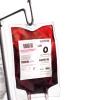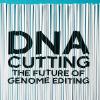An international team of researchers led by scientists at the University of Cambridge has created the first detailed genetic map of human proteins.

This will be used to enhance our understanding of a wide range of diseases and aid development of new drugs.
The study characterised the genetic underpinnings of the human plasma “proteome” and identifies nearly 2,000 genetic associations with almost 1,500 proteins.
Previously, there was only a small fraction of this knowledge, as researchers could measure only a few proteins simultaneously in a robust manner. The researchers used a new technology to measure 3,600 proteins in the blood of 3,300 people.
They then analysed the DNA of these individuals to see which regions of their genomes were associated with protein levels, yielding a four-fold increase on previous knowledge.
Adam Butterworth, one of the authors, said: “Compared to genes, proteins have been relatively understudied in human blood, even though they are the ‘effectors’ of human biology, are disrupted in many diseases, and are the targets of most medicines. Novel technologies now allow us to start addressing this gap in our knowledge.”
One of the uses for this genetic map is to identify particular biological pathways that cause disease, exemplified in the paper by pinpointing specific pathways that lead to Crohn’s disease and eczema.
The researchers are making all of their results openly available for use.




